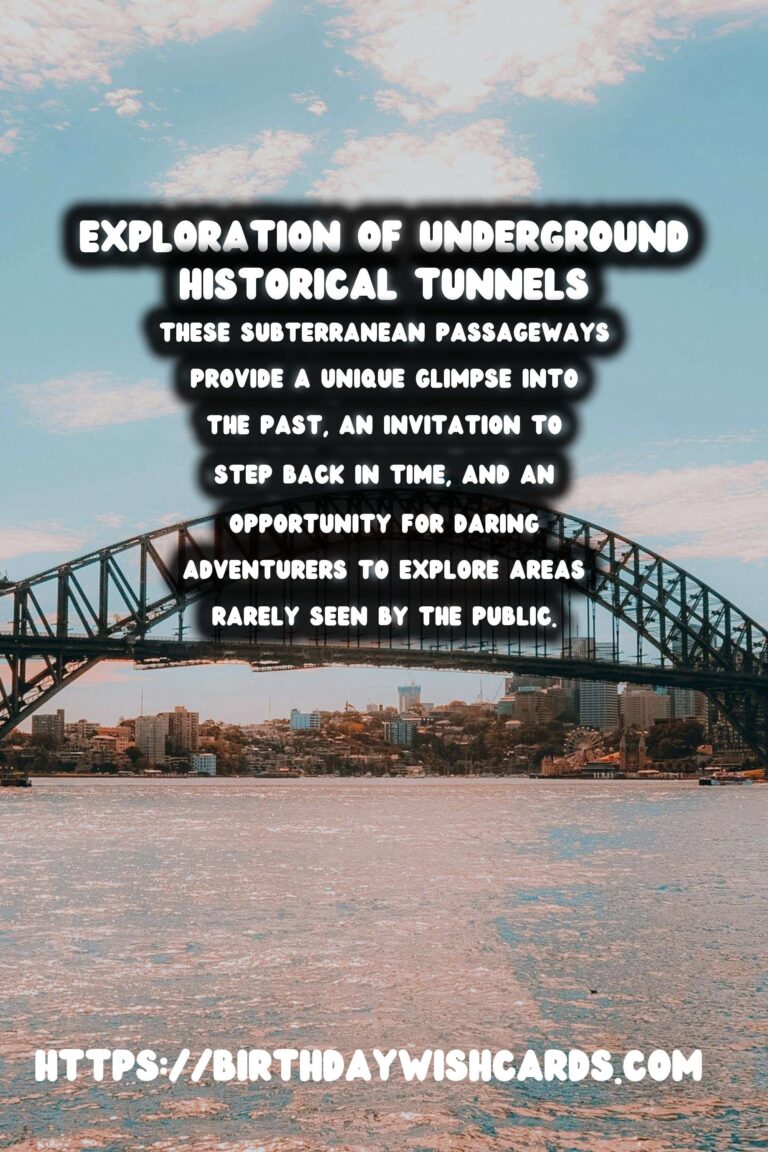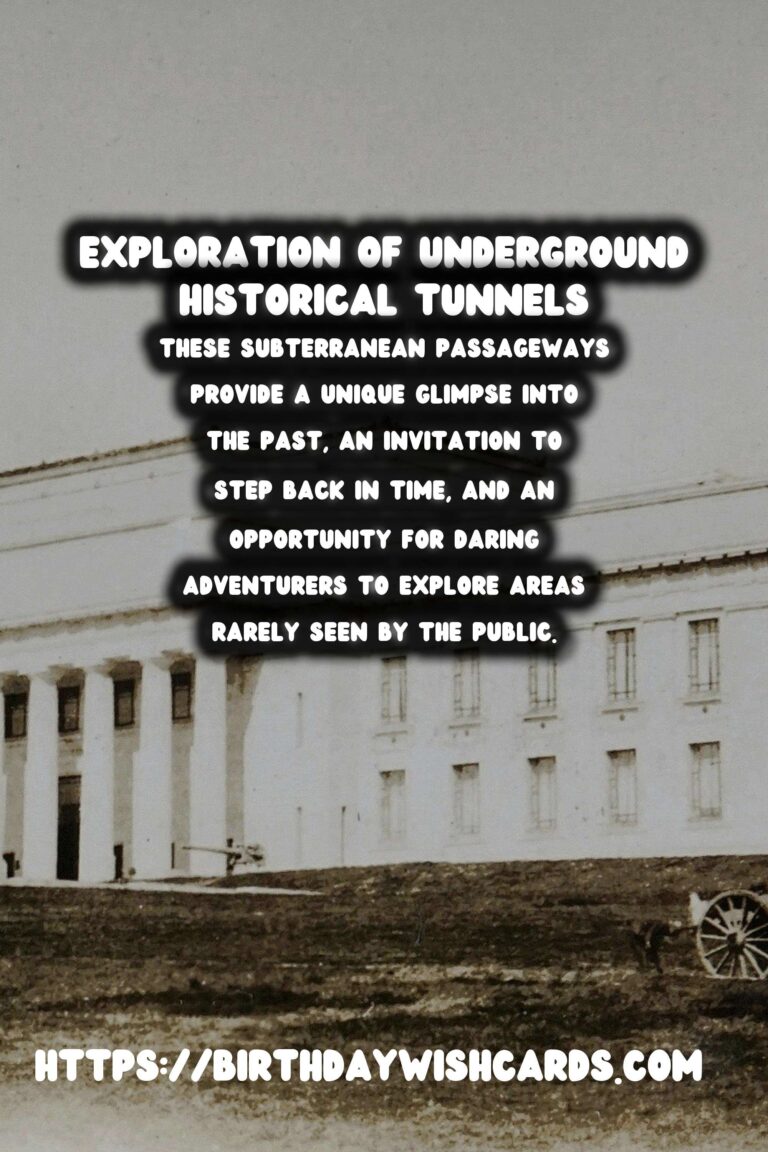
Urban exploration, often termed ‘urbex,’ is an exhilarating activity for those drawn to the mysteries of our man-made environments. Among the most intriguing destinations for urban explorers are the underground historical tunnels that weave beneath our cities. These subterranean passageways provide a unique glimpse into the past, an invitation to step back in time, and an opportunity for daring adventurers to explore areas rarely seen by the public.
The Allure of Underground Tunnels
The world beneath our feet is shrouded in secrecy and history. Cities across the globe are home to labyrinthine networks of tunnels constructed for various now-antiquated purposes, including transportation, utilities, and defense. As cities evolved, these tunnels became relics, forgotten by the masses but preserved in their subterranean silence.
One of the main reasons these tunnels captivate explorers is the thrill of discovery. Every bend and echo tells tales of the past, from their construction days to the present. Whether it’s the underground railways of New York City or the war-time bunkers below London, each destination unfolds a narrative that provokes both imagination and admiration.
Famous Underground Historical Tunnels
1. The Catacombs of Paris
No exploration of underground tunnels would be complete without mentioning the haunting Paris Catacombs. Encompassing over 200 miles, these ossuaries hold the skeletons of approximately six million Parisians. Initially constructed to consolidate the city’s ancient stone mines, their use morphed into a place of rest for the dead by the late 18th century.
2. The Shanghai Tunnels of Portland
Portland, Oregon, is home to the infamous Shanghai Tunnels. Legend has it that these tunnels were once used to Shanghai sailors and were central to a dark piece of human smuggling history. Today, they offer a chilling reminder of Portland’s more criminal past.
3. Hidden Bunkers of Berlin
Berlin, rich in war-time history, harbors a series of bunkers and tunnels constructed during WWII. These underground structures offered protection to thousands of civilians amid the chaos and stand today as testimonials to a city’s resilience.
4. The Underground City of Montreal
Known as the ‘RESO,’ Montreal’s Underground City is more a complex network than a city, offering over 20 miles of walkways linking shopping centers, hotels, banks, and more. Unlike other tunnels, this network is still in use and thrives as the city’s alternate pedestrian system.
Safety and Respect in Urban Exploration
The excitement of exploring underground tunnels often comes with its set of challenges and responsibilities. Safety should always be the foremost priority. These areas can be hazardous, with potential for cave-ins, poor air quality, and missteps in the dark. Urban explorers are encouraged to venture in groups, take adequate lighting, maps, and ensure someone knows where they are heading.
Moreover, respect for these historical sites is paramount. Many tunnels are protected by law as heritage sites. It’s crucial to leave no trace, ensuring these landmarks remain untouched for future generations of explorers.
Conclusion
Underground historical tunnels beckon to those who desire to experience history in its most raw and unfiltered form. They hold an irreplicable charm that simultaneously educates and awakens the adventurous spirit within us all. As urban explorers venture below ground, they become part of a legacy that bridges the past and present, uncovering stories that have long been buried but not forgotten.
Urban exploration, often termed ‘urbex,’ is an exhilarating activity for those drawn to the mysteries of our man-made environments. These subterranean passageways provide a unique glimpse into the past, an invitation to step back in time, and an opportunity for daring adventurers to explore areas rarely seen by the public.
#UrbanExploration #HistoricalTunnels

